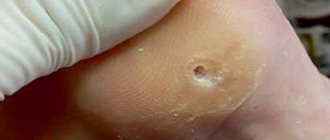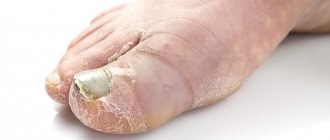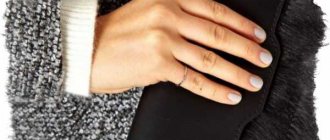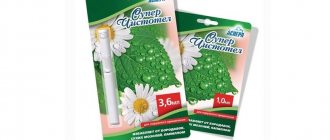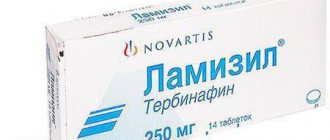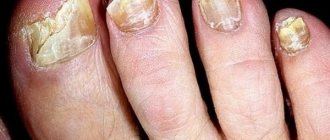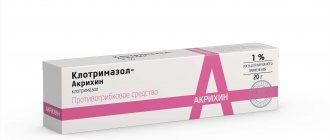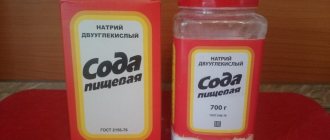Causes of fungal nail infections and risk factors
The cause of nail fungus in most cases is contact with another person.
Risk factors for fungal infection are the following conditions:
- Elderly age.
- Diseases of the cardiovascular system.
- Bacterial skin lesions.
- Eczema, dermatitis.
- Abuse of alcoholic beverages.
The disease develops when pathogenic fungi get on the nail plate. They can also enter the blood and skin. In most cases, the cause of the development of pathology is contact with another person. The following reasons for the development of a fungal infection are possible:
- Staying in common areas such as a bathhouse or swimming pool. In this case, the fungus most often affects the toes.
- Contacts with a person suffering from onychomycosis. Can be transmitted through personal belongings.
- Cosmetic procedures if the instruments are not disinfected. For example, during a pedicure or manicure procedure.
- Failure to comply with personal hygiene rules. Lack of proper control over the condition of the feet or wearing poor-quality shoes leads to the development of nail fungus.
- Taking medications, the side effect of which is the development of fungal diseases.
- Poor circulation, varicose veins.
Any injury to the nail also leads to the development of the disease, as the risk of infection on the nail plate increases. Slow nail growth also increases the likelihood of the onset of a pathological process.
Prevention
Absolutely every doctor will be able to confirm the fact that preventing toe fungus is much easier than treating it later. Especially if mycosis of the interdigital zone progresses. The resulting symptoms are extremely unpleasant. It takes a very long time to treat the disease and after treatment you need to follow some rules:
- It is important to adhere to the rules of personal hygiene. It is prohibited to use other people's hygiene items.
- Always wear slippers in swimming pools and saunas and never walk barefoot. After washing your feet, wipe dry and treat with lemon juice.
- Pay due attention to the condition of the dermis of the legs.
- Moisturize the skin using special cosmetic products. This will help avoid cracks.
- Monitor your health and prevent a decrease in immunity.
- Treat the inside of shoes with vinegar.
- Wear new socks every day and purchase only from natural materials.
- Be sure to make foot baths at home.
Fungal spores are killed when exposed to chlorine. Therefore, it is recommended to regularly treat the premises. Fungi are also afraid of high temperatures.
From all that has been said, we can conclude that foot fungus is an extremely dangerous disease. The consequences of the disease can be extremely negative for human health. You should not self-medicate so as not to cause complications.
Nail or foot fungus always begins with the outermost toes affected. Most often, the big toe is the first to suffer, since its nail is the largest in size, but in some cases, the fungus appears on the little toe first. Such onychomycosis is dangerous due to the rapid destruction of the nail plate, which is associated with the small size of the nail on the little finger.
Stages of onychomycosis and their symptoms
Stages of fungal infections on the big toe nail
Each stage of nail fungus has its own symptoms. Depending on this, treatment is selected, so it is very important to understand at what stage the fungal infection is.
- Normotrophic. The nail plate changes its shade, while maintaining the shine of the nail and its normal thickness. Spots of various sizes gradually appear; they have a white-yellow color. As the pathology develops, the spots increase in size and become slightly convex, eventually covering the entire nail plate. At the same time, the thickness of the nail remains in normal condition.
- Hypertrophic. At this stage, the manifestations of onychomycosis become more pronounced. In addition to changing the shade of the nail, the thickness of the nail changes. It increases by more than 2 mm. This is caused by hyperkeratosis - increased formation of skin scales. The nail plate loses its shine, becomes dull, begins to crumble and becomes severely deformed. Particularly severe destruction occurs in the lateral parts of the nail.
- Atrophic. The nail plate begins to acquire a gray-brownish tint, and the dullness becomes more pronounced. As the disease progresses, the nail becomes smaller and may completely atrophy. The pathological process develops from the tip of the nail plate, gradually moving towards the skin fold and growth zone. Symptoms of deformation do not affect the growth zone itself for a long time.
- Distal. The deformation process becomes uniform throughout the nail plate. Pronounced stripes appear on the nail. As the nail crumbles, its free edge completely disappears. The nail plate takes on an irregular shape. Swelling and redness appear on the side bolsters. In some cases, when you press, a little pus may appear.
- Proximal. A large white spot appears on the nail plate. The nail begins to completely collapse.
- Total. Is the final stage. The nail plate is completely affected. The nail crumbles and takes on different shades.
Diagnosis of fungus
Diagnostics includes a visual examination and a number of studies
To make a diagnosis, you must consult a dermatologist. To begin with, the specialist will conduct a visual inspection, then carry out the following procedures:
- Scraping from the infected area of the nail plate.
- Microscopy, which will reveal the presence of a fungal disease.
As a rule, diagnosing fungus on the extremities does not cause problems. Even by visual inspection, you can understand whether fungus is present and its stage.
Treatment principle
To treat fungus on the little finger, external antifungal agents are used. To get rid of the disease faster you need to:
- maintain personal hygiene;
- do foot baths regularly;
- treat the skin around the affected area with an antiseptic;
- increase immunity.
To avoid the spread of fungal spores to healthy nails, you should use separate manicure tools for the affected finger; disposable nail files are best. Be sure to treat the affected area daily with special products, thoroughly wash the skin, carry out antiseptic treatment, and wear only socks and shoes made of natural, breathable materials.
Drug treatment
One of the means for drug treatment is Clotrimazole ointment.
How to cure nail fungus
Currently, there are many ways to treat toenail fungus. Treatment methods depend on the stage of the fungal infection. In the initial stages of the disease, only external medications are sufficient.
Antifungal varnishes
There are special antifungal varnishes for treating affected nails.
Many people are interested in how to treat nail fungus on the big toe. For these purposes, special varnishes designed to eliminate fungal infections are widely used. They are distinguished by their fast-acting effect and ease of use. The range of such varnishes is huge, so everyone can choose an individual product for themselves.
| Varnish name | Description |
| Lotseril | The active substance is Amorolfine. Suitable for treating fungus when more than 2/3 of the entire nail plate is affected. Apply 1-3 times a week. Involves a long treatment period of six months. The average price is 1100-1200 rubles. |
| Oflomelid | Has a broad antifungal effect. Effective against a wide range of different fungi. Suitable for treatment at any stage. Cost from 900 rubles. |
| Batrafen | The active substance is Ciclopirox, it is effective against 58 species of fungi. The course of treatment lasts 3 months. The average price is 2000 rubles. |
| Mikozan | The composition contains only natural ingredients. Apply 1-2 times a day for one month. Sometimes side effects appear in the form of itching and burning. Price from 850 rubles. |
| Demicten | Used for the prevention and treatment of the initial stages of fungal infection. It has an affordable price from 200 rubles. |
| Lamisil | Effective against yeast and mold type fungi. The course of treatment lasts 6-12 months. The price is 1300 rubles. |
Ointments, sprays and creams
Among the sprays, ointments and creams for the treatment of toenail fungus, we can highlight the products presented in the table below. They are very popular and have proven to be the most effective.
| Name | Description |
| Lamisil | Spray for topical use. The active ingredient Terbinafine completely inhibits the growth of fungi. Reduces the likelihood of relapse. The first results are noticeable after 2 weeks of use. Price from 450 rubles. |
| Nizoral | Available in cream form. Effective against most types of mushrooms. It has virtually no contraindications or side effects. Price from 400 rubles. |
| Exoderil | Cream for eliminating fungus from the nail plate. Eliminates itching and prevents further spread of infection. Cost from 500 rubles. |
Tablets for oral administration
In advanced stages of fungal infection, you need to take pills
Oral medications are prescribed extremely rarely. Their use is advisable only in advanced stages of fungal infection. Since they cause a large number of side effects, they should not be taken without a doctor’s prescription. Among the tablets, the drugs presented in the table below are especially popular.
| Name | Description |
| Terbinafine | Inhibits the process of fungal reproduction. Not effective against yeast-type fungi. They are easily absorbed by the body and rarely cause side effects. Price from 300 rubles. |
| Ketoconazole | Has a direct effect on the causative agent of onychomycosis. Effective against yeast-type fungi and dermatophytes. In case of low stomach acidity, consume exclusively with food. Cost from 250 rubles. |
| Itraconazole | Has a wide spectrum of antifungal action. The result of use is noticeable after a week and has a general strengthening effect on the condition of the nail plate. Cost from 350 rubles. |
Nail plate removers
Nogtomycin is one of the special products that allows you to gently remove the nail
Removal of the nail plate may be necessary if the fungal infection has affected its entire surface. To do this, you need to use special tools that allow you to gently remove the nail. In addition, their action is also aimed at eliminating fungus. Such means include:
- Nogtimycin.
- Mikospor.
- Onychoplast.
- Nailitis.
When using them, special care must be taken to prevent injury and further spread of infection.
Laser exposure
Treatment of nail fungus with laser - the latest method of therapy
Laser is an alternative method for treating fungus on the big toe. Laser beams are able to penetrate deep into the thickness of the nail, which can effectively eliminate the infection. This procedure is recommended for people who are hypersensitive to drugs used to treat mycosis.
The laser acts painlessly and does not cause discomfort. The procedure has no side effects or contraindications. To achieve maximum effect, it is necessary to carry out a course of such procedures.
Surgical removal
Removing the nail plate surgically is a traumatic method, therefore it is used as a last resort
Surgical removal of the nail plate is the most radical method. It is used only if other methods did not give the desired result. The operation is performed under local anesthesia. The nail plate is completely removed.
One of the positive aspects of this method is that it can quickly get rid of a fungal infection. If you take the necessary measures, the growth of a healthy nail can be accelerated.
The negative side is that rehabilitation after the intervention is relatively long, and pain may occur.
Folk remedies
Traditional medicine methods are widely used in the treatment of fungal infections. It is recommended to use them as additional measures to the main treatment. They cannot replace medications. The most common recipes:
- Regularly steam your feet in soda water with added iodine. After this, the nail is treated with an antibacterial agent.
- Apply a drop of five percent iodine to the affected toenail daily. As a preventive measure, apply 1-2 times a week.
- Apply apple cider vinegar to your nails for a week.
- Grind the celandine and bring it to a boil. Add the solution for foot baths.
- Add soda and a piece of laundry soap to the foot bath. Carry out the procedure 2-3 times a week.
Conservative therapy
The effectiveness of treatment for toe fungus depends on the correct identification of the irritant fungus. It is not recommended to eliminate the disease on your own, as if the drugs are selected incorrectly, the clinical picture of the pathology can be distorted.
We invite you to read: Lichen simplex in humans: causes, symptoms and diagnosis, how to treat lichen simplex in humans
Therapy should be comprehensive and consist of several treatment methods.
The doctor may prescribe:
- use of topical drugs;
- taking antifungal tablets;
- desensitizing therapy.
As an additional therapeutic effect, the doctor may prescribe antibacterial and antihistamine medications. The treatment course with antifungal drugs lasts for 3 months.
Tablets that are prescribed for the treatment of mycosis have a large number of contraindications. They are prohibited from being used for therapy by pregnant women, children, women during lactation, as well as patients prone to nephrological pathologies. Such drugs should not be combined with oral contraceptives.
In addition to medications in tablet form, the doctor may prescribe the use of antimycotic drugs:
- sprays;
- ointments;
- plasters;
- creams;
- gels.
